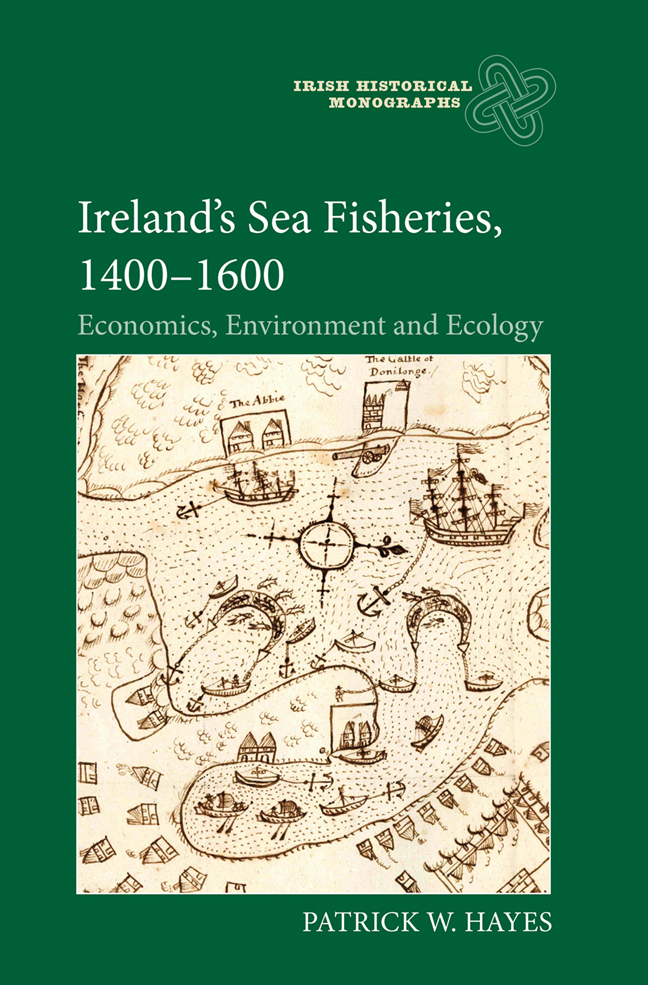Book contents
- Frontmatter
- Dedication
- Contents
- List of Illustrations
- Acknowledgements
- Abbreviations
- Glossary of Fish Species
- Introduction
- 1 The Development of Fisheries, 1400–1500
- 2 Diversity and Cooperation in Sixteenth-Century Fisheries
- 3 The Fish Trade
- 4 The Impact of War and Piracy
- 5 Fish Consumption and Provisioning
- 6 Oceanographic Variation and Environmental Change
- Conclusion
- Appendices
- Bibliography
- Index
- Miscellaneous Endmatter
- Frontmatter
- Dedication
- Contents
- List of Illustrations
- Acknowledgements
- Abbreviations
- Glossary of Fish Species
- Introduction
- 1 The Development of Fisheries, 1400–1500
- 2 Diversity and Cooperation in Sixteenth-Century Fisheries
- 3 The Fish Trade
- 4 The Impact of War and Piracy
- 5 Fish Consumption and Provisioning
- 6 Oceanographic Variation and Environmental Change
- Conclusion
- Appendices
- Bibliography
- Index
- Miscellaneous Endmatter
Summary
They fish with hooks of gold and we but with speech.
Sir William Cecil to Sir Henry Sidney, 13 July 15671. Qualitative Methods
There have been few comprehensive studies of Ireland's late medieval or early modern fisheries, and most of what has been written tends to rely on anecdotes rather than methodically collected evidence. The current study aimed to change that by utilising a range of digital methods designed to collect and analyse evidence systematically from a variety of qualitative and quantitative sources. Information collected from these sources was then amalgamated into two central relational databases: the QFD for qualitative information and the FTD for quantitative. From these databases, three datasets have been released alongside this study. One dataset contains qualitative information related to fishing from the QFD, and another relates to piracy events from 1564 to 1603. The third dataset is a compilation of fish trade data from the FTD. All three are hosted on the file-sharing service Figshare. The rest of this appendix will detail how these databases and their related datasets were constructed and explore some of the methods used to analyse data from them.
No sources from early modern Ireland deal specifically with fisheries; the evidence is scattered throughout a range of primary sources and can be found in many different contexts. Three main categories of evidence have been employed in this study: qualitative, quantitative, and visual. Each of them demands a different method and approach. In addition, archaeological and ecological observations from existing studies were interwoven with the historical data.
The corpus of qualitative primary sources collected for this study contains ninety documents and over 11 million words. Given this scale, it would be nearly impossible to locate all entries relevant to fisheries using manual means. Instead, Qualitative Data Analysis (QDA) methods were used to search sources. MaxQDA was the software chosen; it allows for the large-scale searching and coding of textual and multimedia sources. MaxQDA, and similar software packages, use ‘codes’ to collect and apply meaning systematically to text segments. In the a priori QDA approach, codes are determined prior to data collection, while in a more exploratory approach, codes are ‘continually refined as inductive codes are developed and applied to more data’. The latter approach was taken.
The methodology used was inspired by Robert M. Schwartz's analysis of the British parliamentary reports on sea fisheries.
- Type
- Chapter
- Information
- Ireland's Sea Fisheries, 1400-1600Economics, Environment and Ecology, pp. 255 - 265Publisher: Boydell & BrewerPrint publication year: 2023

